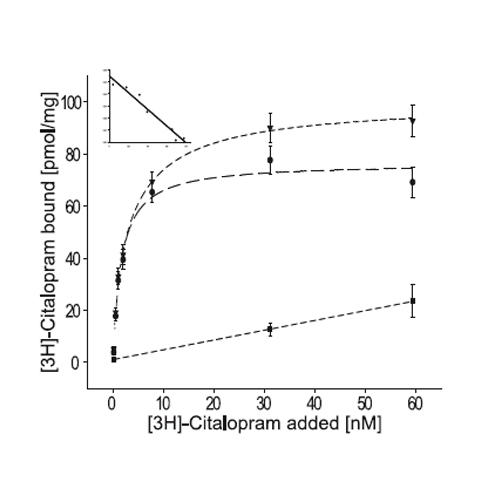Azidobupramine, an Antidepressant-Derived Bifunctional Neurotransmitter Transporter Ligand Allowing Covalent Labeling and Attachment of Fluorophores
10-Feb-2016
PLOS ONE, DOI:10.1371/journal.pone.0148608
PLOS ONE, online article
The aim of this study was to design, synthesize and validate a multifunctional antidepressant probe that is modified at two distinct positions. The purpose of these modifications was to allow covalent linkage of the probe to interaction partners, and decoration of probe-target complexes with fluorescent reporter molecules. The strategy for the design of such a probe (i.e., azidobupramine) was guided by the need for the introduction of additional functional groups, conveying the required properties while keeping the additional moieties as small as possible. This should minimize the risk of changing antidepressant-like properties of the new probe azidobupramine. To control for this, we evaluated the binding parameters of azidobupramine to known target sites such as the transporters for serotonin (SERT), norepinephrine (NET), and dopamine (DAT). The binding affinities of azidobupramine to SERT, NET, and DAT were in the range of structurally related and clinically active antidepressants. Furthermore, we successfully visualized azidobupramine-SERT complexes not only in SERT-enriched protein material but also in living cells stably overexpressing SERT. To our knowledge, azidobupramine is the first structural analogue of a tricyclic antidepressant that can be covalently linked to target structures and further attached to reporter molecules while preserving antidepressant-like properties and avoiding radioactive isotopes.











